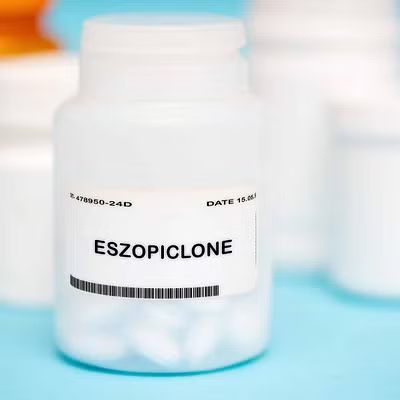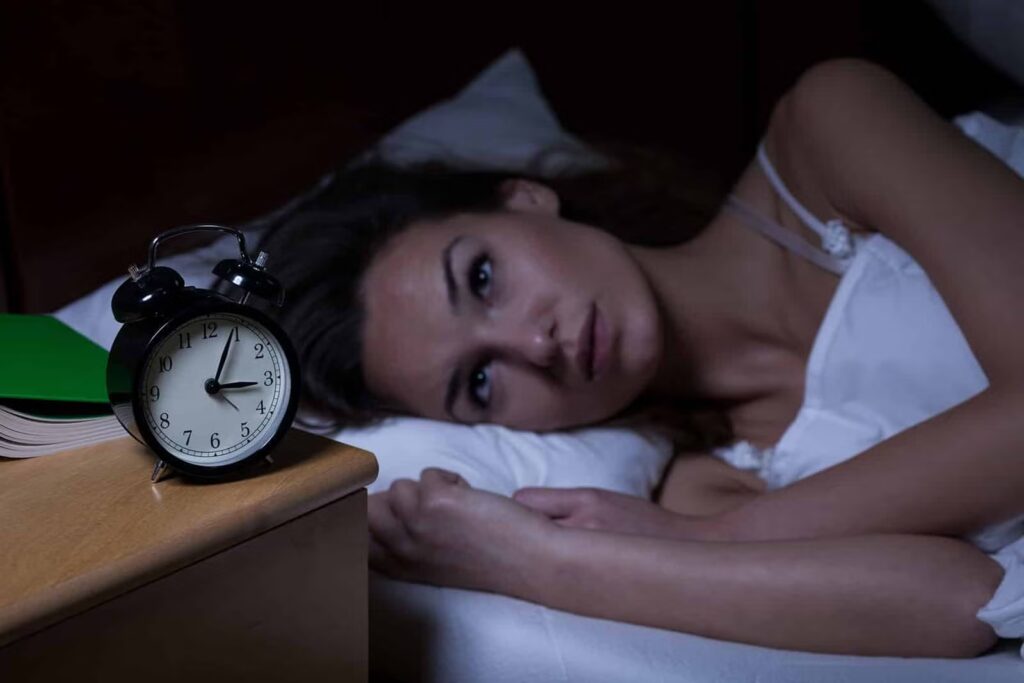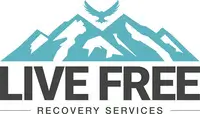Lunesta (Eszopiclone) Addiction Treatment in New Hampshire
When looking for Lunesta addiction treatment in New Hampshire, Live Free Recovery Services has your back.
Home > Treatment > Sleeping Pills > Lunesta
Lunesta is one of the few medications on the market used to treat chronic insomnia. It has a calming effect that can make falling asleep and achieving deep sleep much simpler.
However, in high enough doses, Lunesta can also cause a euphoric state. So, people quickly began misusing the medication, leading to severe cases of addiction.
Unfortunately, getting over a Lunesta dependency can be tricky. Luckily, there are several therapeutic techniques that can keep you on the road to recovery.
So, if you’re looking for Lunesta addiction treatment in New Hampshire, the best option is to join a rehab facility like Live Free Recovery. We offer several treatment options that will help you get clean and stay on the wagon.
What Is Lunesta?
Lunesta is the brand name of the sedative-hypnotic drug eszopiclone. It’s one of only three prescription medications on the market used to treat chronic insomnia, the other two being zaleplon (Sonata) and zolpidem (Ambien).
All these drugs have similar effects; they cause a sense of calm and relaxation. Yet, each medication works a little differently.
How Does Lunesta Work?
Lunesta works by attaching itself to your brain’s gamma-aminobutyric acid (GABA) receptors. This will reduce your nerve cells’ ability to receive, create, and send chemical messages around your body.
The effect is similar to what alcohol does. It’ll dull your senses, slow your reaction time, and make you feel drowsy.

That’s why doctors prescribe Lunesta to people who are having a hard time going to sleep. The drug can help insomniacs get a good night’s rest from the first dose.
However, in a high enough concentration, Lunesta can cause a sense of euphoria. Because of that, the drug made its way into the illegal drug trafficking trade.
Is Lunesta Addictive?
Regrettably, because of the way Lunesta works, it can be highly addictive. Over time, your body will develop a dependence on the drug and won’t be able to function without it.
That’s because your brain can no longer stimulate GABA receptors efficiently without Lunesta. Plus, you can develop resistance to the drug, which means you have to continually increase the dosage to get the full effect of Lunesta.
Without proper doctor supervision, this can turn into an addiction in a few months. On top of that, you can’t quit Lunesta cold turkey since that can lead to severe withdrawal symptoms.

Lunesta Dose and Overdose
Lunesta is incredibly potent, which means small doses will go a long way. Typically, a doctor will start by prescribing a patient around 1mg of the drug per day.
This comes in the form of a single pill that they can take right before bed. If this dosage is ineffective, the medical professional can increase it to 3mg daily.
However, this only applies to young, healthy patients. For elderly people who have other health conditions, the rule of thumb is no more than 2mg of Lunesta per day.
Exceeding this dosage recommendation will make a chemical dependence on the drug far more likely. Plus, if a person crushes the pills to snort them or dissolves them in liquid for plugging, we consider this abuse that can lead to addiction.
Short-Term Effects of Lunesta
If you’re only taking Lunesta for a couple of weeks, the chances of addiction are low. Yet, as soon as you stop taking the drug, you may notice a few negative side effects.
These can include:
- Short-term memory impairment
- Hallucinations
- Dizziness
- Confusion
- Impaired coordination
In some cases, Lunesta can also cause a loss of appetite, which may lead to severe weight loss. If you experience any of these symptoms, it’s not a good idea to self-medicate with Lunesta or other drugs.
Instead, contact your general physician as soon as possible and ask for help.
Long-Term Effects of Lunesta
Once a person develops a chemical dependency on Lunesta, it will take a toll on their mental and physical well-being. Besides causing spells of anxiety and depression, the drug can have intense side effects in the long run.
For instance, it can cause:
- Seizures
- Convulsions
- Strokes
- Moodiness
- Nausea
- Mental fog
Without intervention, these symptoms can have fatal consequences. If you experience any of these side effects, call 911 immediately.
Signs and Symptoms of Lunesta Abuse
There are a few telltale signs that can indicate a person is suffering from a Lunesta addiction. These include:
- Cravings
- Loss of sexual appetite
- Inability to fulfill responsibilities
- Drowsiness during the morning
- Social isolation
- Coordination issues
Besides that, there are also a few physical markers that manifest, like:
- Lowered blood pressure
- Male breast enlargement
- Chronic headaches
- Stuffy nose
- Sneezing
These symptoms are similar to the effects of the common cold, but they’re much more severe.
Lunesta Withdrawal
One of the main drawbacks of abusing Lunesta is you can’t quit the drug cold turkey. Doing so will lead to withdrawal symptoms that can be tough to manage without medication.
Some of the most common Lunesta withdrawal symptoms include:
- Muscle aches
- Nerve pain
- Shakes and tremors
- Physical and mental fatigue
- Itchiness
- Irritability
- Insomnia
Lunesta Detoxification
Going through Lunesta withdrawal alone can be exceptionally dangerous. The symptoms can present suddenly and lead to severe pain and discomfort.
That’s why people struggling with addiction need a well-developed drug detoxification program. They require constant supervision and a team of medical professionals around them to avoid any short-term health issues.
The detox process will start with gradually reducing the Lunesta dosage and end with eliminating the drug from their system altogether. This should allow the patient to safely adjust to life without the medication.
Depending on the severity of the Lunesta addiction, the process can take anywhere from two weeks to a month.
Lunesta Addiction Treatment
Detoxing is only the first step on a long journey to recovery. To overcome a Lunesta addiction, patients will have to go through extensive treatment.
Here are some of the options we offer at Live Free Recovery Center:
1. Inpatient Treatment
Inpatient treatment is when a person struggling with addiction stays at a rehab facility for a period. With this option, the patient will have access to medical care 24/7.
Not only will this make the detoxification process easier, but it also allows them to learn techniques to stay sober.
Another benefit of inpatient treatment is that people struggling with addiction get to meet others going through similar issues. This can help them create a sense of community, which is crucial to staying on the wagon.
Plus, during their stay at the rehab facility, patients will get to explore various types of therapy that can help with addiction.
2. Outpatient Treatment
Even though in-patient treatment is effective, it can be incredibly restrictive. Patients aren’t allowed to leave the facility whenever they please, which can be an issue for some people.
If the person struggling with addiction has to hold on to their job or academic studies, then outpatient treatment is the way to go.
With this option, patients will only have to attend rehab programs for a few hours a day. After that, they’re free to go about their regular routines.
However, because of the lenient nature of outpatient treatment, it’s not suitable for all types of addiction. If a person is struggling with a critical Lunesta substance abuse disorder, they need constant monitoring.
3. Partial Hospitalization
Partial hospitalization is a combination of inpatient and outpatient treatment. Patients will spend the majority of their weeks in a medical facility.
Usually, they’ll need to attend rehab programs for around five to eight hours a day, six days a week. This may seem like an intensive plan, but it’s necessary for people struggling with severe addictions.
This option is more affordable than inpatient treatment and offers a higher level of care than outpatient treatment.
4. Medical-Assisted Treatment
Just like with most substance abuse disorders, a Lunesta addiction may come with mental health issues. These can make it difficult for patients to get clean and stay on the wagon.
Thankfully, medical-assisted treatment can help with that. This is a special program that involves intensive mental health counseling and other behavioral therapies.
On top of that, doctors can prescribe certain medications to reduce the symptoms of withdrawal.
5. Sober Living Program
If a person suffering from a Lunesta addiction is facing financial issues, they can choose to live at a sober living facility. This halfway home provides the ideal environment for former addicts to stay clean.
There, patients will have access to all sorts of programs and skill-building exercises to help them get back on their feet. They’ll also learn healthy coping mechanisms that can make controlling urges and cravings much easier.
Finally, some sober living facilities provide job opportunities for former addicts.
Take Back Control of Your Life Today
When looking for Lunesta addiction treatment in New Hampshire, Live Free Recovery Services has your back. We can offer you several types of treatment that will make overcoming a substance abuse disorder simpler.
These include detoxification, inpatient treatment, outpatient treatment, partial hospitalization, and medical-assisted treatment. We also provide patients with a sober living program that can help them get back on their feet.
Did this article answer your questions?
"*" indicates required fields
Take the First Step Towards a Brighter Tomorrow
At Live Free Recovery, we’re committed to walking alongside you on every step of your journey. Our compassionate team is here to provide the guidance and support you need to overcome addiction and reclaim your life. Don’t wait—reach out today to speak with someone who truly understands your struggles and can help you take that important first step toward healing and a fresh start.
Your path to recovery starts here.
